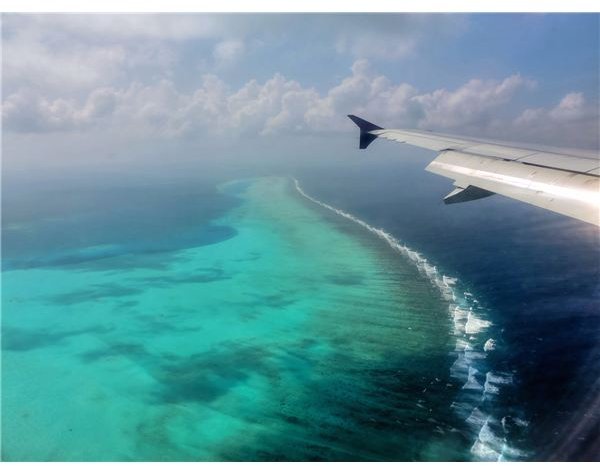Oceans of the World - An Environmental Guide
Fauna of the Oceans Blue
From tiny parasitic organisms to colossal marine mammals, the world’s oceans are home to a rich diversity of life. Plankton and tiny creatures provide life sustaining nutrition to fish. These smaller fish provide food for larger aquatic life. The chain continues to the largest mammals of all, the blue whale. Astounding worlds lies throughout the oceans, all in a delicate natural balance. Discover the remarkable fauna of the world’s oceans through the articles below.
- The Wonders of Life Beneath the Ocean
- Leatherback Sea Turtles - Endangered Giants of the Sea
- Hawaiian Ocean Environment - A Natural Assortment of Life
- Marine Mammals Survival in Hawaii’s Ocean Habitat
- Colors Alive in the Fauna of Florida’s Ocean Waters
- Discovering the Pacific Ocean Fauna
- Mysteries That Lie Deep in the Ocean
- Survival of the Fittest in Icy Waters of the Arctic Ocean
- Tiny But Mighty - The Protozoa
I
Studying the Ocean Floor
As technologies develop and become more sophisticated we are able to explore the ocean floor and its features in greater detail than ever before. You can even be a maritime adventurer and get a close-up view of the sea world from the comfort of your own home; it’s all just a simple mouse click away.
Topography of the Ocean Floor
There is a perception amongst some that the ocean floor is flat and uninteresting. But nothing could be further from the truth as there is a vast array of geological features such as hills, mountains and valleys. There are also plateaus, shelves and slopes, hydrothermal vents, whale falls, cold seeps and sea floor cracks. And there is much that still has to be explored.
- <strong>Ocean Floor Topography and Features</strong>
- <strong>Seafloor Spreading: Why the Ocean Floor is Expanding</strong>
- <strong>Learning About Hydrothermal Vents</strong>
- <strong>About the Benthic Zone: The Sea Floor</strong>
- <strong>Understanding Mid-Ocean Ridges</strong>
- <strong>About the Abyssal Zone: The Ocean Deep</strong>
- <strong>The Geology of Ocean Basins</strong>
- <strong>Anatomy of an Underwater Volcano</strong>
Ocean Currents
Surface currents and deep water currents are the result of winds and solar heating in the environment around the ocean. Gravity and the Coriolis force defines the direction of these currents as they flow across the ocean surface or sweep through the water beneath the surface layer.
Most currents are rotating, existing between continents. They create the movement of food sources as well as providing fresh water movement for aquatic life. The currents that exist on the surface of the ocean are known as gyres. Throughout the northern hemisphere, these gyres move in a clockwise direction, juxtaposed to the gyres in the southern hemisphere that rotate in a counterclockwise movement. Find out more in the articles below.
- Facts About Ocean Currents
- <strong>New Study on Ocean Gyres</strong>
- <strong>The Great Pacific Garbage Patch: What We Know</strong>
How the Ocean Affects Weather
The oceans and the weather are inextricably linked as the two are in continuous contact. They share energy, gases and water and much of what happens at sea affects the weather we experience right here on land.
The more we know about ocean currents and what goes on at sea, the more we will understand about the Earth’s weather patterns.
- <strong>How Do Oceans Affect the Weather?</strong>
- <strong>Normal Weather Patterns of the Northwest</strong>
- <strong>What is Meteorology?</strong>
- <strong>Evaporation Water Cycle: What is it and Why Does it Matter?</strong>
- <strong>How Climate Change Impacts America: What’s the Impact?</strong>
The Health and Future of the Oceans
The future of the oceans and the marine life they contain is uncertain at this time. Global warming, human activities that are leading to pollution problems, over-fishing, and oil spills have left the ecosystems of our world’s oceans out of balance. Some ocean creatures have adapted to these crippled ecosystems, while others are dwindling away in population.
As polar bears face major problems caused by melting ice, birds and oceanic life are having to adjust to more difficult living conditions. Man is causing an unbalance in the food chain by killing off creatures that feed other marine life, thus causing more damage further up the chain.
To study the world’s oceans in their entirety involves looking at how man is destroying this life-giving environment. The articles below discuss the overwhelming amount of environmental damage we have created, and are continuing to create.
- Global Warming Greenland: Sea Levels Rise
- <strong>Effects of Global Warming on Animal Behavior</strong>
- <strong>The Endangered Sea Turtle</strong>
- <strong>Effects of Global Warming on the Great Barrier Reef</strong>
- <strong>What is Coral Bleaching?</strong>
- <strong>Why Did the Blue Whale Become Endangered?</strong>
- <strong>Are Tsunamis a Product of Global Warming?</strong>
- <strong>Ocean Life Deteriorating Due to Carbon Dioxide</strong>
- Water Pollution in San Francisco Estuary Blamed for Deformities in Fish
References
- Photo: “Landing Maldives 6883” by © Nevit Dilmen. Licensed under CC BY-SA 3.0 via Wikimedia Commons - http://commons.wikimedia.org/wiki/File:Landing_Maldives_6883.jpg#/media/File:Landing_Maldives_6883.jpg
